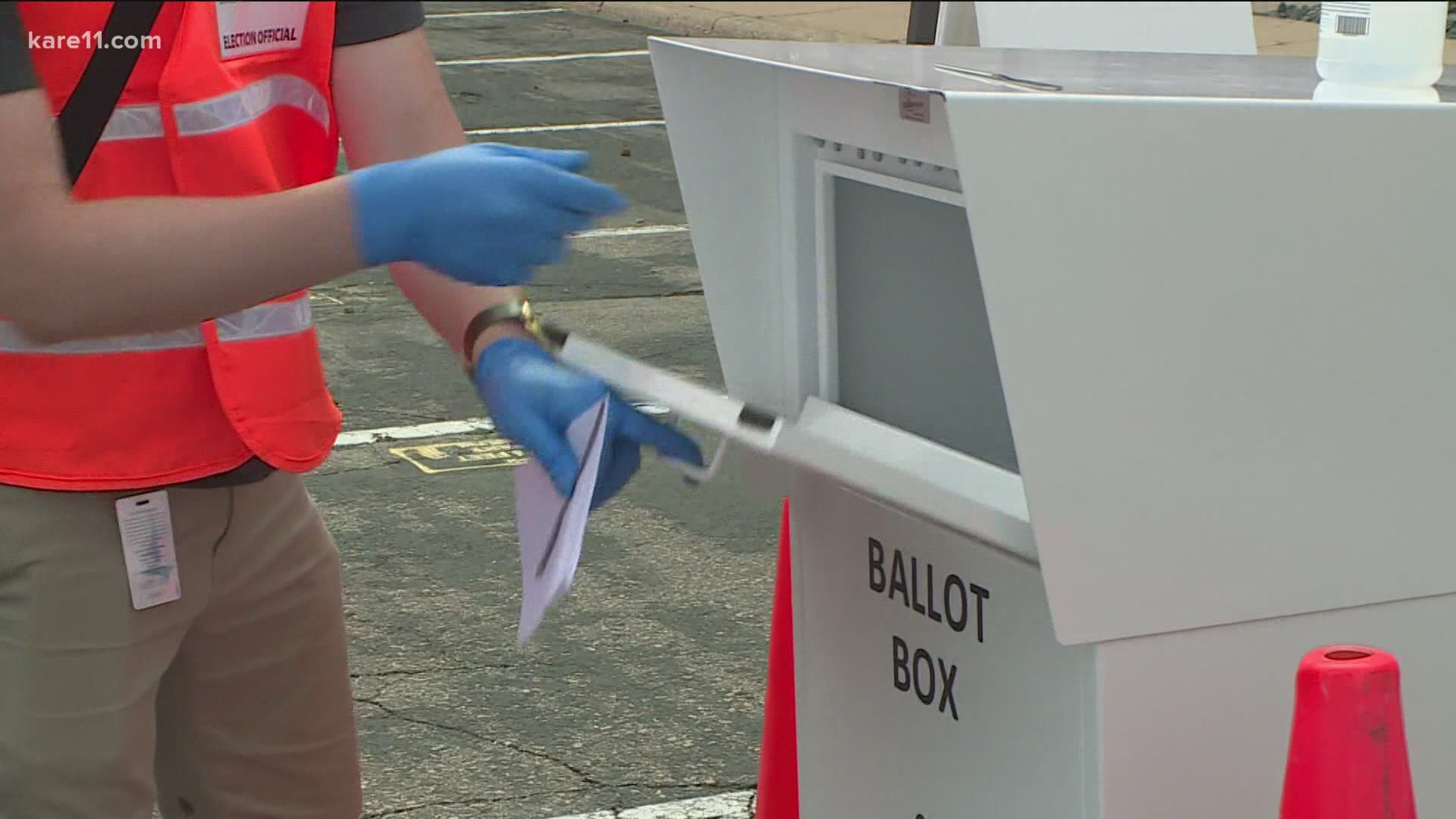ST PAUL, Minn — Key Minnesota lawmakers have agreed in principle to setting up new standards for absentee ballot drop boxes, including 24-hour video surveillance of those ballot receptacles.
House Democrats and Senate Republicans agreed that ballot drop boxes need to be protected from tampering, or abuse through ballot harvesting schemes. A compromise version of the State Government Finance bill will set new standards and require video surveillance.
Until now, state law has lacked a lot of specifics when it came to ballot drop boxes.
"The law basically said, 'Hey, here are these things called drop boxes. They exist and you can have them.' But there wasn't a lot of meat on the bone. So we decided to change that," Minnesota Secretary of State Steve Simon told KARE.
And while most drop boxes in the Twin Cities metro area were surrounded by election staff members, in some areas of the state the boxes were in courthouse lobbies without intense monitoring.
"If you have an unattended drop box, one that's meant to be set up for 24-7 kind of use, there should be some eyes on it -- literally some eyes, either people's eyes or camera eyes."
Minnesotans enthusiastically embraced new styles of voting in the 2020 election.
According to the Secretary of State's Office 58% of voters statewide cast early absentee ballots, either by mail, in person or by dropping them off at an early voting center.
Granted the COVID pandemic played a huge role in that statistic, but people have clearly warmed up to the idea of avoiding the Election Day crowds.
"The other way to put that is only 42% voted the old fashion way by going to a particular place, a polling place on Election Day," Simon told KARE.
"The growth in those ways of voting will continue here in Minnesota."
That's why Simon and lawmakers on both sides of the aisle pressed for standardized rules for drop boxes and security measures.
The same set of House and Senate negotiators ended up tossing other proposed changes to elections law because they couldn't reach bipartisan agreement.
Republicans agreed to give up voter ID, which had been passed by the GOP-controlled Senate. They also agreed to drop a proposed system of provisional ballots for people who register to vote on Election Day -- essentially those ballots would be set aside and only counted if the voter's identity, eligibility and address can be verified.
Democrats also dropped provisions that were passed by the DFL-controlled House, which included restoration of voting rights to people on probation. Another change the Democrats dropped would've made voter registration automatic for those who get or renew driver's licenses.
Currently motor voter registration in Minnesota is an opt-in system, and the elections bill passed by the House would've made it an opt-out situation.
"There’s bad stuff from my viewpoint that didn’t make it in and that’s good," Simon remarked.
"But there’s good stuff that didn’t make it in, and that’s bad. So, it’s the ultimate compromise."

